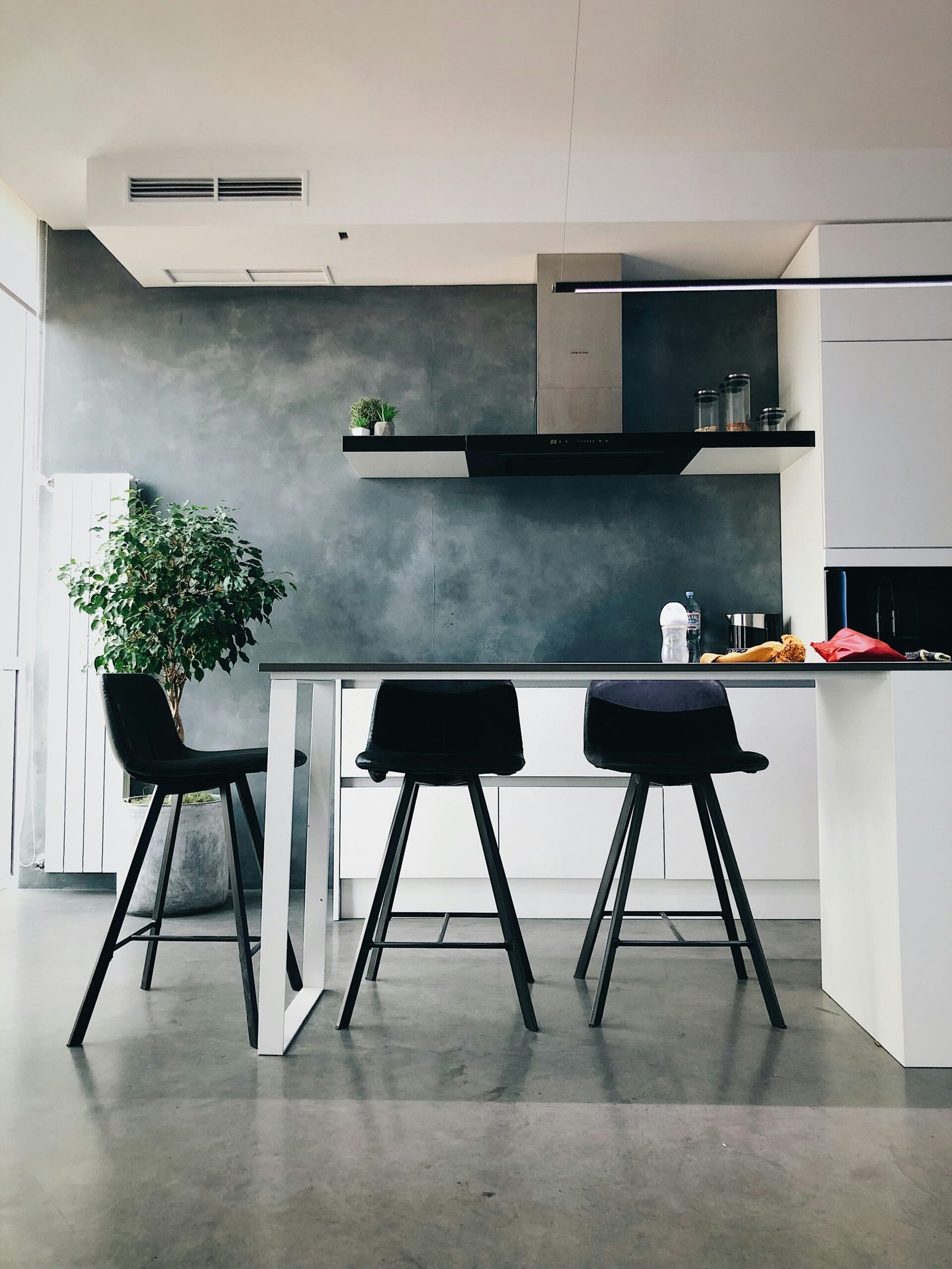The Evolution of Bar Stool Designs
Bar stools have undergone significant transformation since their inception, reflecting broader trends in interior design, functionality, and user preferences. Originating in the late 19th century, traditional bar stools were primarily utilitarian, crafted from wood and designed with a simple, height-appropriate structure for taverns and pubs. These early designs laid the foundation for what would become a diverse range of styles, driven by changing tastes and practical needs.
As design philosophies evolved, particularly in the mid-20th century, bar stools began to embrace more contemporary aesthetics. The introduction of ergonomic features marked a pivotal point in their evolution, as designers recognized the need for comfort in addition to style. With this, materials varied from traditional wood to metals and plastics, allowing for innovative shapes and forms. The sleek lines of minimalist designs gained popularity, aligning with modernist movements that favored simplicity and functionality over ornate detail.
Throughout the decades, bar stools have also been heavily influenced by industrial design movements. This is evident in the rise of metal bar stools, showcasing raw finishes and structural elements reminiscent of factories and urban spaces. Designers such as Charles and Ray Eames contributed to this trend, introducing ergonomic principles alongside new materials, leading to iconic pieces that seamlessly blend comfort and style.
Moreover, cultural shifts, including the rise of home entertaining, have further shaped the development of bar stools. Contemporary consumers desire more than just seating; they seek pieces that complement their lifestyle and aesthetic. Today, the popularity of versatile stools speaks to this trend, with designs often including adjustable heights, diverse color palettes, and an emphasis on sustainable materials. Such flexibility caters to various spaces, from modern kitchens to chic bars, ensuring that bar stools remain a fundamental element of contemporary design.
Materials Matter: A Guide to Bar Stool Construction
When selecting bar stools for your space, understanding the materials used in their construction is crucial. The choice of materials not only affects the aesthetic appeal but also impacts durability, maintenance, and overall comfort. Common materials include wood, metal, fabric, and plastic, each with distinct advantages and disadvantages that cater to different preferences and needs.
Wooden bar stools exude warmth and timeless charm, making them a popular choice for traditional and rustic designs. They can be incredibly sturdy and can last for years when properly maintained. However, they may require occasional refinishing or polishing to retain their appeal. Conversely, metal bar stools offer a more modern and industrial look. They are generally easier to clean and more resistant to wear and tear, but they may lack the comfort of padded seating unless cushions are added.
Fabric-covered stools provide an inviting look and enhanced comfort, oftentimes featuring a variety of colors and patterns. They can bring a cozy feel to any bar or kitchen space; however, they may demand more frequent cleaning and maintenance due to stains and spills. Plastic stools, on the other hand, are lightweight and versatile, perfect for casual settings. They are resistant to moisture and easy to clean, but may not offer the same longevity or visual appeal as other materials.
Innovative materials are also gaining traction in the bar stool market. Options like recycled wood or sustainably sourced materials cater to environmentally conscious consumers. These choices help minimize the ecological footprint while adding unique character to the furniture. When selecting a bar stool, consider your personal style, the usage frequency, and the maintenance level you are willing to commit to. By understanding the pros and cons of different materials, you can make a more informed decision that complements your space beautifully.
Color Your World: The Latest Trends in Bar Stool Colors
When it comes to bar stool design, color plays a pivotal role in shaping the overall ambiance of any space. As trends evolve, we observe a significant shift from traditional hues to a dynamic palette that appeals to the modern aesthetic. Currently, classic neutrals dominate the scene, providing a versatile foundation that can effortlessly blend with various decor styles. Shades such as beige, gray, and white remain steadfast, allowing homeowners to achieve elegance without overwhelming the senses.
However, alongside these timeless colors, bold and vibrant patterns are gaining traction. Deep blues, rich greens, and fiery reds punctuate spaces, infusing energy and personality. The increasing popularity of these eye-catching hues is influenced by the psychology of color, which suggests that colors can evoke emotions and set the tone for interaction within a room. For instance, shades of blue are known for their calming effects, while yellows can inspire creativity and joy. Understanding these psychological implications empowers homeowners to make informed choices about their bar stool colors, enhancing the overall atmosphere of their spaces.
Furthermore, seasonal trends also dictate color preferences, with spring ushering in pastel shades and summer encouraging bright, lively colors. In contrast, autumn and winter often emphasize deeper tones and rich textures. To adapt to these seasonal changes, incorporating bar stools in trending colors can be a simple yet effective way to refresh your space. When selecting bar stool colors, consider how they will complement existing decor elements. Accents that harmonize with wall colors, flooring, or cabinetry can create a cohesive look. Alternatively, adding a pop of color can serve as a statement piece, drawing attention and enhancing visual interest in your kitchen or entertainment area.
Choosing the Perfect Bar Stool for Your Space
Selecting the ideal bar stool involves a careful consideration of several factors, including height, style, and intended use. The first essential aspect to assess is the height of the bar stool. Generally, traditional bar stools range from 28 to 32 inches in seat height, making them suitable for standard-height counters and bars. Conversely, counter stools, which generally measure between 24 to 27 inches, are more appropriate for kitchen islands and pub tables. It is crucial to measure your counter or bar height to ensure a comfortable fit that promotes ease of use.
Next, style plays a significant role in the overall aesthetic of your space. Bar stools are available in various designs, from sleek, modern options to more traditional, rustic styles. When selecting a style, consider the existing decor of your environment. Cohesion is key, so choose stools that complement the features around them. Furthermore, consider the materials used; wooden stools offer warmth and natural appeal, while metal options can introduce an industrial touch. Upholstered stools can provide additional comfort, making them suitable for extended use, particularly in dining areas or entertainment spaces.
Mixing and matching different styles and materials can create a unique visual appeal, but doing so requires a careful balance. To achieve this, select a unifying element such as color or texture that ties the different pieces together. For smaller spaces, opt for stools that can be easily tucked away when not in use, while for larger spaces, you may have the opportunity to integrate more diverse styles without overwhelming the area.
Ultimately, the perfect bar stool should not only reflect personal taste but also cater to functionality and comfort within your space. By taking into account the aforementioned factors, you can create an inviting environment that enhances your overall decor.
If you’re interested in purchasing the item you seek, please click the link for additional details: #americanachoice.
https://amzn.to/3SBN3Oy
AFFILIATE DISCLOSURE: I am an affiliate for this company, I am not a paid employee.
I may receive a commission if you click a link on this page and choose to purchase something.
You can rest assured I will only share things I believe in and will be valuable to you.



